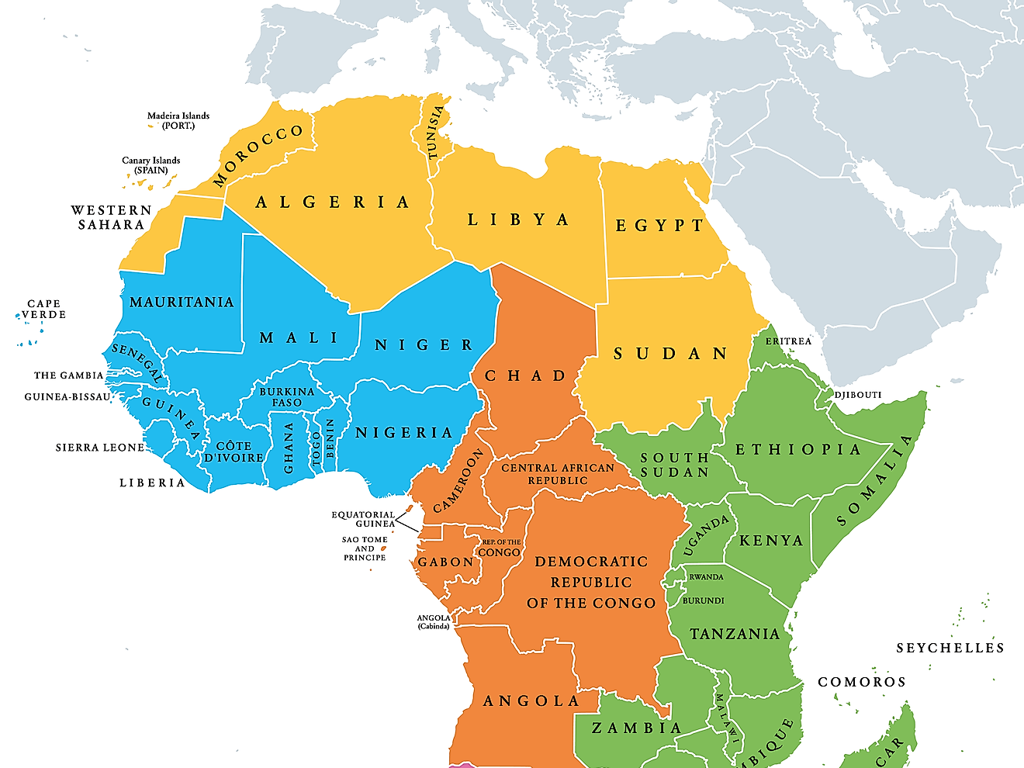Understanding Powers Of Ten
Subject: Math
Grade: Fifth grade
Topic: Powers Of Ten
Please LOG IN to download the presentation. Access is available to registered users only.
View More Content
Today’s Adventure: Understanding Powers of Ten
– What are Powers of Ten?
– Powers of Ten multiply a number by 10 repeatedly.
– Powers of Ten in mathematics
– They help in understanding large numbers and performing calculations.
– Daily life applications
– Used in measuring distances, like kilometers, or money, like cents to dollars.
– Practice with examples
|
Begin the lesson by explaining the concept of Powers of Ten, which involves multiplying a number by 10 multiple times. Emphasize their importance in mathematics for simplifying calculations and understanding place value. Illustrate how Powers of Ten are used in everyday life, such as converting meters to kilometers or cents to dollars, to make the concept relatable. Provide examples for the students to practice, such as 10^2 for 100 or 10^3 for 1000, and encourage them to think of other instances where they encounter Powers of Ten. The goal is for students to recognize the pattern and practicality of Powers of Ten in various contexts.
Exploring Powers of Ten
– What is a Power of Ten?
– It’s 10 multiplied by itself a number of times
– Multiplying ten repeatedly
– 10 x 10 becomes 10^2, which is 100
– Recognizing the pattern
– Each power increases the number of zeros
– Examples of Powers of Ten
– 10^1 = 10, 10^2 = 100, 10^3 = 1,000
|
This slide introduces the concept of powers of ten, which is a fundamental part of understanding place value and the decimal system in mathematics. Start by defining a power of ten as the result of multiplying ten by itself a certain number of times. Explain that the exponent (the small number above the ten) tells us how many times to multiply ten by itself. Show the pattern that emerges as we increase the power: each time we go up a power, we add another zero to the number. Provide clear examples, starting with 10^1 and moving up to at least 10^3, to illustrate this pattern. Encourage students to notice how the place value changes with each increase in the exponent. This understanding will be crucial as they progress in their study of mathematics.
Visualizing Powers of Ten
– Illustrate with base ten blocks
– Blocks show how 10 units form a ‘ten’, and 10 ‘tens’ form a ‘hundred’.
– Compare 10^1, 10^2, and 10^3
– 10^1 is 10, 10^2 is 100 (10×10), 10^3 is 1,000 (10x10x10).
– Exponential growth visuals
– Visual aids show how quickly numbers increase with each power of ten.
– Grasping large numbers easily
|
This slide aims to help students visualize the concept of powers of ten using base ten blocks. By showing how individual units combine to form larger blocks, students can see the concrete representation of 10^1, 10^2, and 10^3. Emphasize the pattern of exponential growth, demonstrating that each increase in the exponent results in the number growing tenfold. Use visual aids like stacked blocks or a chart to illustrate how quickly values can grow as the power of ten increases, which helps in understanding the magnitude of larger numbers. Encourage students to draw their own representations of powers of ten to solidify their understanding.
Exploring Powers of Ten
– Understanding powers of ten
– Powers of ten in math problems
– How to multiply or divide numbers by 10, 100, 1000, etc.
– Grasping large numbers with powers of ten
– Visualize 1,000 as 10^3 and how it simplifies understanding of large quantities
– Real-world examples of powers of ten
– Space distances: Light years, Earth to Sun; Population: Cities vs. Countries; Biology: Human cells count
|
This slide introduces the concept of powers of ten and its application in solving math problems. It’s crucial for students to grasp how multiplying or dividing by 10, 100, 1000, and so on, shifts the decimal point, making calculations easier. Emphasize the use of powers of ten to comprehend large numbers, such as the number of cells in the human body or the population of a country. Provide real-world examples like the distance from the Earth to the Sun or the vastness of space measured in light-years to illustrate the practicality of using powers of ten. Encourage students to think of other examples where powers of ten are applicable. This will help them understand the magnitude of numbers and how powers of ten provide a simpler way to express and work with them.
Multiplying by Powers of Ten
– How to multiply by powers of ten
– Multiply by adding zeros for each power of ten
– Shortcut: Move the decimal point
– Each power of ten moves the decimal one place to the right
– Example: Multiply 23 by 10, 100, 1,000
– 23 x 10 = 230, 23 x 100 = 2,300, 23 x 1,000 = 23,000
|
This slide introduces the concept of multiplying whole numbers by powers of ten. Start by explaining that multiplying by 10, 100, or 1,000 is like adding zeros to the number. Show that for each power of ten we go up, we move the decimal point one place to the right. For example, multiplying 23 by 10 shifts the decimal one place, resulting in 230. By 100, it shifts two places, resulting in 2,300, and by 1,000, it shifts three places, resulting in 23,000. Emphasize that this is a quick and easy method without having to perform long multiplication. Encourage students to practice with different numbers to gain confidence in this method.
Dividing by Powers of Ten
– How to divide by powers of ten
– Divide by 10, 100, 1,000 by moving the decimal point to the left for each power of ten.
– Shortcut: Move the decimal left
– For every power of ten, we move the decimal one place to the left.
– Example: Divide 4,600 by 10, 100, 1,000
– 4,600 ÷ 10 = 460, 4,600 ÷ 100 = 46, 4,600 ÷ 1,000 = 4.6
|
This slide introduces the concept of dividing numbers by powers of ten, which is a fundamental skill in understanding place value and decimals. Emphasize the simplicity of the process by showing that instead of performing long division, we can find the answer by moving the decimal point to the left for each power of ten we divide by. For example, dividing by 10 moves the decimal one place, by 100 moves it two places, and so on. Provide the example of 4,600 divided by 10, 100, and 1,000 to illustrate the concept. Encourage students to practice with different numbers to gain confidence in this method.
Let’s Practice Powers of Ten!
– Engage with interactive examples
– Group activity: multiply & divide by 10s
– Work in teams to solve problems like 300 x 10 or 5000 ÷ 100.
– Solo worksheet: powers of ten problems
– Complete a worksheet on multiplying and dividing numbers by powers of ten.
– Discuss answers & strategies in class
– We’ll review the worksheet answers together and talk about different ways to solve the problems.
|
This slide is designed to facilitate active learning through both collaborative and individual practice. Begin with interactive examples that demonstrate the concept of multiplying and dividing by powers of ten. Then, move on to a group activity where students work together to solve related problems, fostering a collaborative learning environment. Following this, students will work individually on a worksheet to reinforce their understanding, allowing them to apply the concept independently. Conclude with a class discussion to go over the answers, share strategies, and address any misconceptions. This approach ensures that students are not only practicing the calculations but also developing a deeper understanding of the concept of powers of ten.
Class Activity: Power Tower Challenge
– Build a Power Tower with blocks/cards
– Represent different powers of ten
– Each block/card stands for 10^n, where n is the block level
– Work in groups for a tall stable tower
– Use powers of ten knowledge
– Understand how 10, 100, 1000, etc., stack up
|
This activity is designed to help students visualize and understand the concept of powers of ten through a hands-on experience. Provide students with blocks or cards, each labeled with a different power of ten (e.g., 10^0, 10^1, 10^2, etc.). Instruct them to work in small groups to build the tallest tower they can, using the blocks/cards to represent the increasing powers. As they build, they should discuss how each level of the tower relates to the power of ten it represents. This will reinforce their understanding of how numbers grow exponentially with higher powers of ten. Possible variations of the activity could include challenging students to calculate the total value of their tower or comparing the stability of towers with different base sizes.
Conclusion: Powers of Ten Reflection
– Recap of Powers of Ten concepts
– Discuss Powers of Ten in activities
– How did using Powers of Ten help solve problems?
– Share our learning takeaways
– What new insights about numbers have we gained?
– Explore application of concepts
– Where might we see Powers of Ten in real life?
|
This slide aims to consolidate the students’ understanding of the Powers of Ten. Begin with a brief recap of the key concepts, ensuring that students can articulate what Powers of Ten are and how they work. Reflect on the activities completed during the lesson, discussing how the concept was applied to solve problems. Encourage students to share their learning experiences and insights, fostering a collaborative learning environment. Finally, prompt students to think about how the Powers of Ten are applicable in everyday life, such as in understanding large numbers, scaling, and scientific notation, to help them see the relevance of what they’ve learned. This reflection will help solidify their understanding and appreciation of the mathematical concept.






